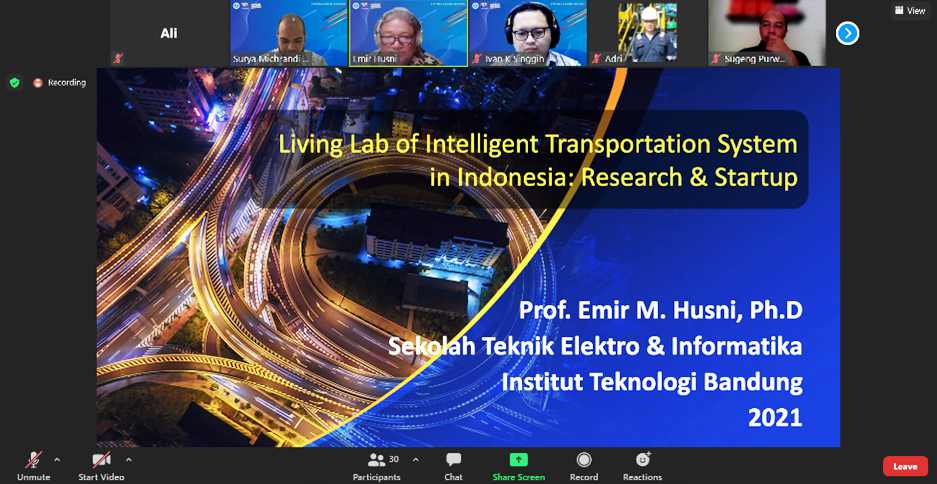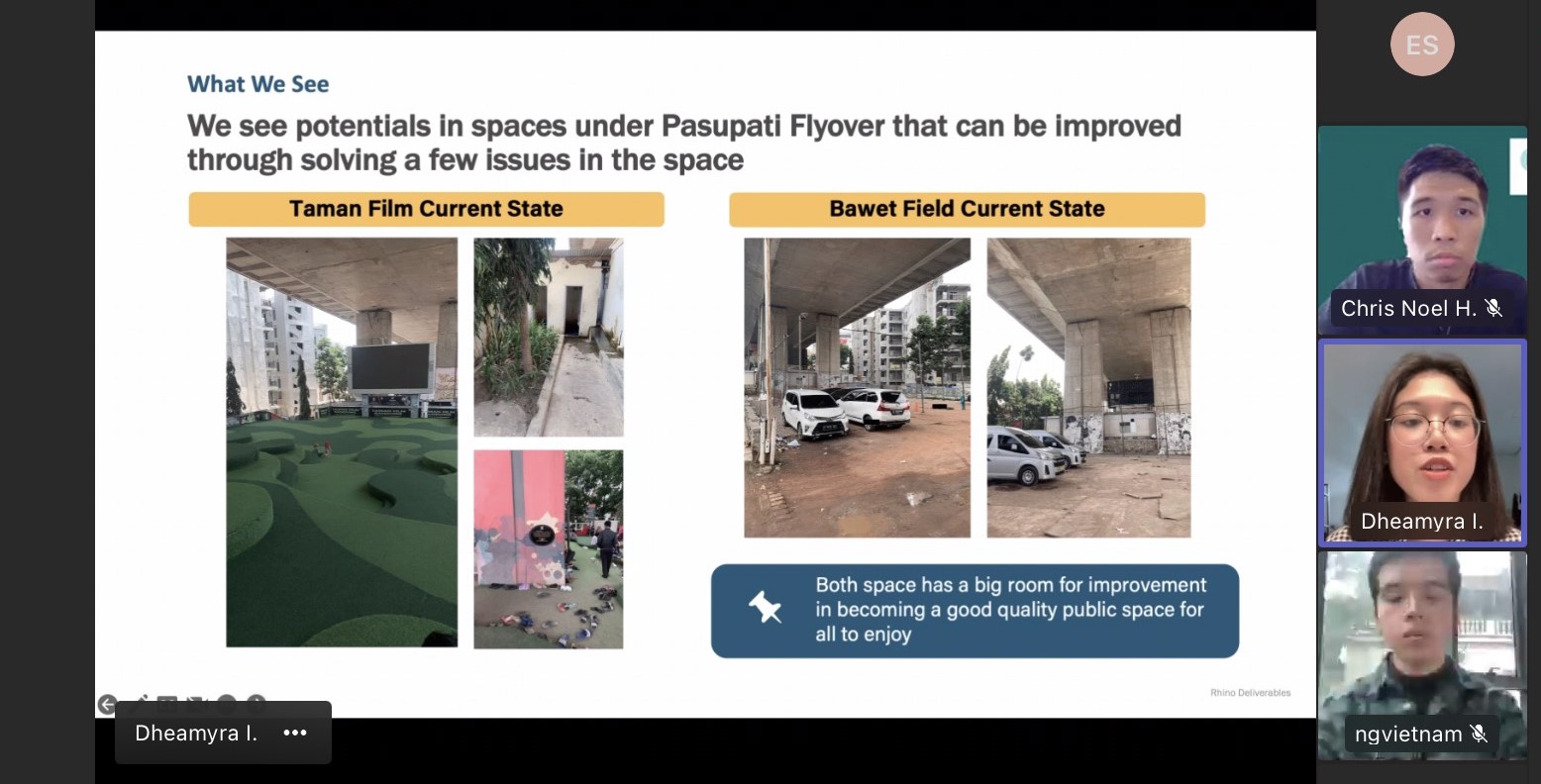Intelligent Transportation System Potentially Becomes The Solution towards Sustainable Transportation Mode Development
By Adi Permana
Editor Adi Permana

BANDUNG, itb.ac.id – Prof. Emir M. Husni, Ph. D. and Dr. Ivan Kristianto Singgih, S. T., M. T. spoke at the School of Electrical Engineering and Informatics (STEI) ITB Webinar titled "Indonesia's Living Lab of Intelligent Transportation System: Research and Startup" on Saturday, March 7, 2021.
Prof. Emir is the Chairman of STEI ITB's Computer Engineering Expertise Group, and Dr. Ivan is a Postdoctoral Researcher at Korea Advanced Institute of Science and Technology (KAIST). Surya Michrandi Nasution, S. T., M. T., was in charge of the activities that were part of the 101st Anniversary of PTTI commemorations.
STEI is particularly relevant in discussing digital transformation in the sphere of transportation, which was the grand theme of the 101 Years of PTTI and ITB, namely "Digital Transformation." The issue is that traffic congestion still exists today, and current efforts to address the issue are insufficient to solve the situation.
Prof. Emir and Dr. Ivan, who are both working on relevant topics, observed the situation and answered from the perspective of research and startups. The advancement of Artificial Intelligence (AI) fosters inventive thinking from academics through intelligent transportation systems (ITS).
This technology allows automobiles to communicate with one another. ITS, according to the government, is required for the growth of the Industrial Revolution 4.0 era. Companies, not to be outdone, are likewise gradually implementing it.
The two speakers' scientific interests include traffic control, censorship, pedestrian management, and automation. Indonesia has at least 22 million vehicles and 113 million motorcycles, representing a 7.5 percent rise.
By examining the trends of vehicle activity on the roadway, this technology is projected to alleviate traffic congestion in large cities. Data from smart CCTV integrated sophisticated systems was used in the study. The data from the CCTV cameras was subsequently delivered to the cloud data master, which was then forwarded to the user. The system will provide recommendations for traffic-free highways with the fastest path through the user's application, taking into account congestion, time, geospatial (point of view from and where to travel), and weather.
According to Prof. Emir, traffic congestion on the streets is barely 1% over the first 24 hours. During busy hours, the congestion is typical. However, because it significantly occurs during peak times, this 1?n have a major impact on many people. "There are big opportunities for startups in ITS due to daily congestion in big cities," Prof. Emir remarked.
The two experts collaborated with the team to create a system that uses the Adaptive Bayes Classifier, which is regarded as more efficient since it incorporates machine learning. Through the system, a congestion formula known as Degree of Saturation (DS) is calculated using a specific equation. It is certain that the road is clogged if the calculation yields an index greater than 0.75. The system will send this information to users through map integrations such as Google Maps and Waze.
Furthermore, a computation known as highway capacity value represents all road characteristics including traffic circumstances, weather, road length, compatibility, temperature, and heterogeneity, as well as all roads crossed to the ultimate destination. The least value of highway capacity is the one that the route view will suggest to the user. As a result of the collaboration with Bandung Smart City, this method can also be used for smart parking.
"In addition to big data, we can utilize RFId (Radio Frequency Identification) to determine the position of objects," Dr. Ivan explained.
Simulating the observation of moving automobiles in Jakarta was used to conduct the study. A simulation of the duration of traffic lights was also conducted since it is highly influential on the intensity of vehicles on the highway. There is also a breakthrough in scheduling vehicles on the road regularly so that they won’t be all on the road at the same time, but this will require further regulation from multiple parties in order to be implemented.
Reporter: Lukman Ali (Mechanical Engineering/FTMD, 2020)
Translator: Naffisa Adyan Fekranie (Oceanography, 2019)

.jpg)
.jpg)
.jpg)
.jpg)
.jpg)

